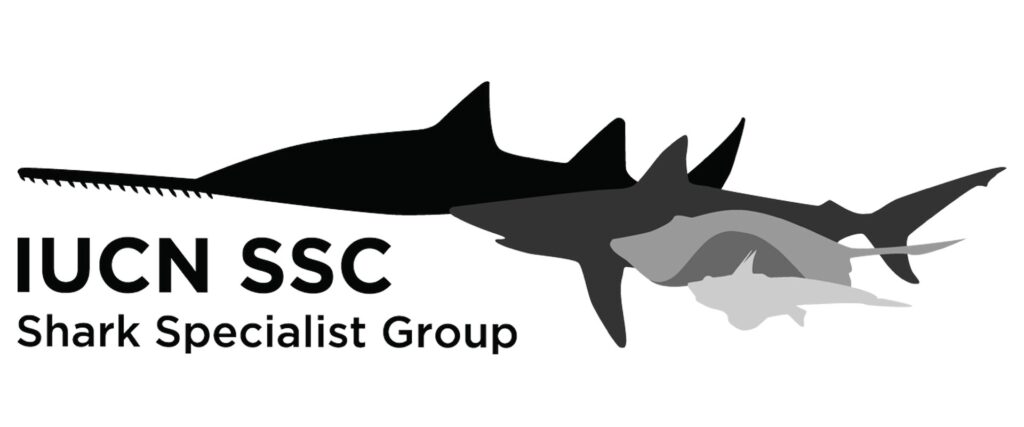IUNC SSC Shark Specialist Group Report w/ *Dr. Mark Erdmann
A third of sharks, rays and chimaeras are threatened with extinction, as new report narrows in on solutions!
Nearly 20 years after its first report warned that sharks were threatened but underrepresented in conservation, the International Union for Conservation of Nature (IUCN) has released a report, “Global Status of Sharks, Rays and Chimaeras”, that highlights new knowledge compiled by 353 experts, from 115 countries and stresses the urgent need to address overfishing and bycatch in all countries. (*One of those 353 experts is Dr. Mark Erdmann, who many of you know from his work in the Bird’s Head Seascape.)
*Dr. Mark Erdmann is the Vice President of Conservation International’s Asia-Pacific marine programs and member of the IUCN SSC Shark Specialist Group, Oceania Region. His work largely focuses on the management of marine protected areas, as well as research on reef fish and mantis shrimp biodiversity, satellite tracking of endangered sharks and rays, and genetic connectivity in MPA network. Read Drs. Erdmann’s & **Dudgeon’s contribution in the IUCN Global Status of Sharks, Rays, and Chimaeras report; “Walking (Epaulette) Sharks” .

“Walking (Epaulette) Sharks” from IUCN Global Shark and Ray report – *Dr. Mark Erdmann & **Dr. Christine Dudgeon
‘Today we understand more about sharks, rays and chimaeras than ever before, but the scale of their declines threatens to outstrip improvements made in research and policy. The conservation and management of sharks is difficult for a variety of reasons, but many governments are breaking down the silos that separate how we deal with sharks and rays as fisheries resources, and as wildlife to conserve.’
‘Nearly 20 years after the first report, there have been drastic changes, with sharks and rays now among the most threatened vertebrates on the planet,’ explains Alexandra
Morata, the IUCN SSC SSG programme officer. Overfishing is driving most species to extinction. Indonesia, Spain and India are the world’s largest shark fishing nations, with Mexico and the USA adding to the top five shark catchers. But only 26% of species globally are targeted: most are caught (and retained) as bycatch. Huge population declines have been seen in the rhino rays (such as wedgefish), whiprays, angel sharks and gulper sharks.
But two decades of research and major policy changes also mean that the solutions are now outlined country by country and can guide governments to implement conservation
action and make fisheries sustainable.
‘This report is a call to action so we can work together and make each of the country recommendations a reality, especially those relating to responsible fisheries management. It is the only way these species will survive and continue to thrive in aquatic ecosystems,’ says Dr Rima Jabado, the IUCN SSC Deputy Chair and SSG Chair who led the 2024 report.
We need sharks, rays and chimaeras. We are only beginning to decipher the role they play in delivering life-supporting resources and services. Some species cycle nutrients
around the ocean; others help us fight climate change by acting as carbon sinks or maintaining carbon sequestering ecosystems like mangroves. They underpin food security in vulnerable coastal communities. In some developing nations, fishers have reported that more than 80% of their income depends on shark and ray fisheries.
‘The report is also a reflection of the tremendous dedication of scientists, researchers and conservationists who are working as a community to contribute to conservation and
make a lasting change,’ Dr Jabado adds.
Access to remote areas, especially across Africa, has increased scientific understanding of the scale of exploitation. Knowledge has improved significantly in Asia, Africa, Central America, the Caribbean and the Indian Ocean. There are also hopeful instances of sustainable fisheries in Canada, the USA and Australia.
There have been incredible strides in research and policy, but this hard work will only save species from extinction if the report’s recommendations are implemented nationally.
‘The message is clear’, says Dr Jabado. ‘With the precarious state of many of these species, we can’t afford to wait.’
**Dr. Christine Dudgeon is the Co-Chair of the IUCN SSC Shark Specialist Group, Oceania Region, and a Research Fellow at the University of Queensland and University of Sunshine Coast, Australia. An accomplished marine geneticist and ecologist, Dr. Dudgeon is a recognized world expert on Indo-Pacific leopard sharks and, with Dr. Erdmann, helped conceptualize and implement the StAR project that is now aiming to recover this endangered species in Raja Ampat. She has also been involved in walking shark research for the past two decades and was one of the scientific authorities that described both the Halmahera walking shark and the Milne Bay walking shark.







































